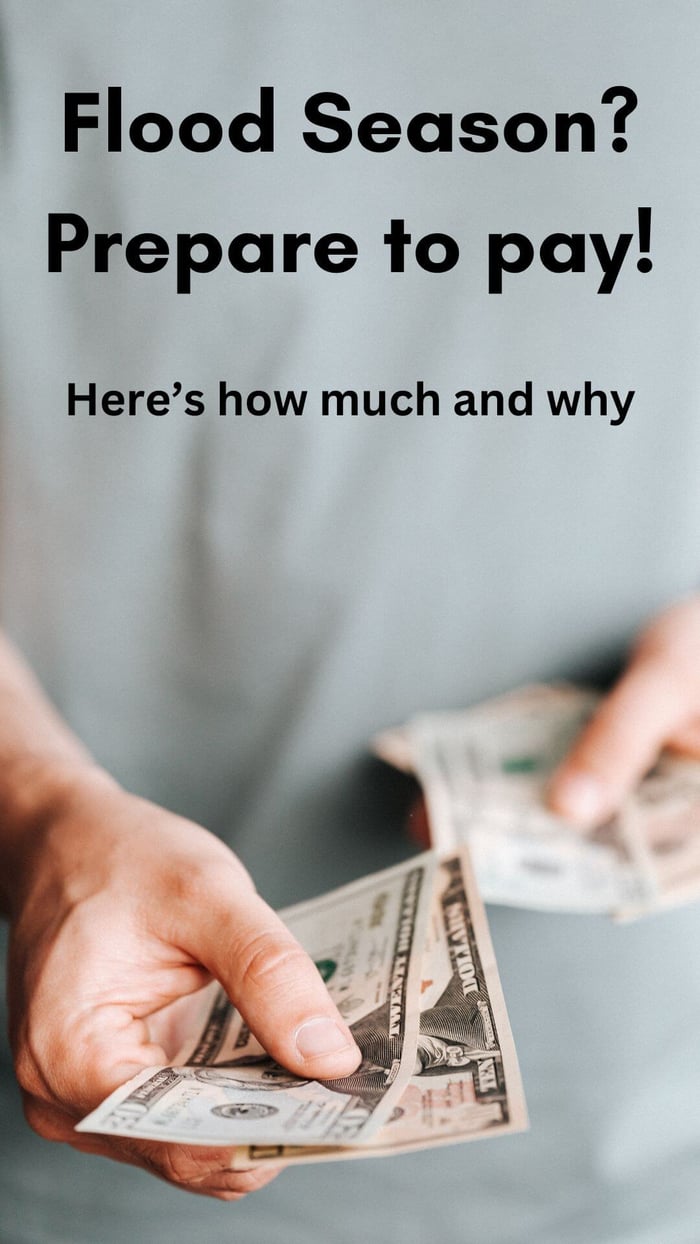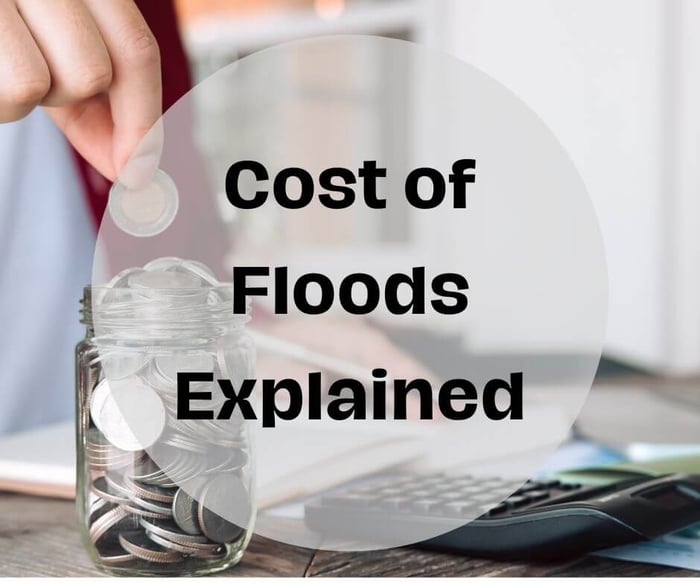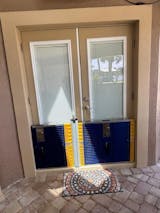Living in the United States, especially in areas prone to flooding, can feel like a constant battle against nature. After experiencing several flood events across different properties, I’ve learned firsthand just how costly these disasters can be. In this post, I’ll break down the financial implications of flooding for both homeowners and business owners, detailing immediate and long-term losses and offering solutions to minimize these costs.
The risk of experiencing water damage to your property in the United States is alarmingly high. Statistically, about 90% of all-natural disasters in the U.S. involve some form of flooding, according to the National Flood Insurance Program (NFIP).
In fact, around one in four homes are at risk of flooding, and the average annual loss due to flooding is estimated to be approximately $32 billion.
With climate change contributing to more severe weather patterns, the frequency and intensity of flooding events are expected to increase, leading to projected damages that could rise to $41 billion annually by 2050.
Given these statistics, homeowners and business owners alike should take proactive measures to assess and mitigate their flood risk. For further information, check out the NFIP's resources at nfip.gov.
Understanding the Immediate Costs of Flooding
When a flood hits, the immediate costs can pile up quickly. Here's a breakdown of potential expenses:
Property Damage
On average, flood damage can range from $20,000 to over $100,000 for homes, depending on the severity of the flooding and the property’s location. For business owners, the costs can be even higher, as commercial spaces often have more extensive infrastructure. According to the National Flood Insurance Program (NFIP), one inch of floodwater can cause approximately $25,000 in damage to your home.

Emergency Services
If you need to evacuate or if emergency services are involved, those costs can add up. Emergency responders, temporary shelters, and first aid can lead to expenses that range from $500 to several thousand dollars.
Cleanup and Restoration
The cleanup process itself is labor-intensive. Hiring professional cleaners and restoration services can cost anywhere from $1,000 to $10,000, depending on the extent of the damage. For businesses, this can be compounded by the need to repair machinery or technology that was damaged in the flooding.
Temporary Relocation
If your property is uninhabitable, finding temporary accommodation can become a significant financial burden. Rent for temporary housing can add up quickly, often costing between $1,500 and $3,500 per month.
Long-Term Financial Losses
The financial impact of flooding doesn’t end with immediate repairs. Long-term consequences can linger for years:
Decreased Property Value
Floods can significantly decrease property values. Homes that have been flooded often see a 10-20% drop in value, depending on the neighborhood and market conditions. For business owners, the loss can be even greater, as clients may be deterred from renting or purchasing in flood-prone areas.

Insurance Premium Increases
After a flood event, many homeowners and business owners will see their insurance premiums rise. In high-risk areas, flood insurance premiums can double or even triple. The average cost for flood insurance through the NFIP can range from $700 to $1,500 per year, but after a claim, you might pay significantly more.
Repairs and Maintenance
Properties that have experienced flooding may require ongoing maintenance and repairs. Mold remediation, structural repairs, and even landscaping adjustments can add thousands of dollars to your budget each year.
Lost Revenue
For businesses, the inability to operate during and after a flood can lead to lost revenue. It’s estimated that businesses can lose anywhere from $5,000 to over $100,000 depending on the length of the closure.
Minimize Flood Costs: Solutions for Homeowners and Business Owners
The good news is that there are flood control solutions available that can help minimize these costs. Implementing preventative measures can save you money in the long run.
Flood Barriers
One effective solution is the installation of flood barriers. These barriers can be set up to protect your property from rising waters, preventing water from entering your home or business. They can be particularly useful in high-risk areas, providing a physical barrier that can prevent significant damage.
DamEasy防洪闸门坝 -终极防洪

$899.00
大坝容易®防洪闸门大坝 洪水在世界各地越来越普遍。曾经的百年现象,现在是房主必须面对的季节性趋势。 这正是为什么你需要这个大坝容易防洪闸门大坝! 作为重型和凌乱沙袋的一个很好的替代品,这个屏障提供了第一道防线,防止水进入你家的门窗。当洪水发生时,快速行动的能力至关重要。此防洪屏障可在 5 分钟内安装,为您提供可靠的防洪保护! 不要等到为时已晚。得到这个防洪屏障门坝,现在保护你的房子! … Read More
Landscaping and Grading
Proper landscaping can redirect water away from your property. Grading your yard to slope away from your home can also help keep floodwaters at bay. Consider using native plants and rain gardens to absorb excess water.
Elevating Structures
If you're in a flood-prone area, elevating your home or business can significantly reduce risk. This could involve raising the foundation or installing piers to elevate structures above flood levels.
Regular Maintenance
Keeping gutters clean, ensuring drains are clear, and maintaining your property’s overall infrastructure can prevent small issues from turning into significant problems during a flood event.
Investing in Flood Insurance
Flood insurance is crucial for those living in high-risk areas. It may seem like an extra expense, but it can be a lifesaver when disaster strikes. Evaluate your insurance options and ensure you have adequate coverage.
Conclusion
The economic impact of floods is significant and can last long after the water recedes. For homeowners, the costs can quickly mount from property damage, temporary relocation, and increased insurance premiums. Business owners may face even more daunting financial challenges, from lost revenue to the costs of repair and cleanup.
However, by taking proactive steps—like installing flood barriers, improving landscaping, and investing in flood insurance—you can minimize your financial losses and protect your property. Flooding doesn’t have to spell disaster; with the right preparation and solutions, you can weather the storm.
Useful Links
- National Flood Insurance Program (NFIP): nfip.gov
- FEMA’s Flood Insurance Resource Center: fema.gov
- “The Economic Impact of Flooding in the U.S.”, Nation of Change: nationofchange.org
- “Rising Flood Risk: What Homeowners Should Know”, Carbon Brief: carbonbrief.org



















